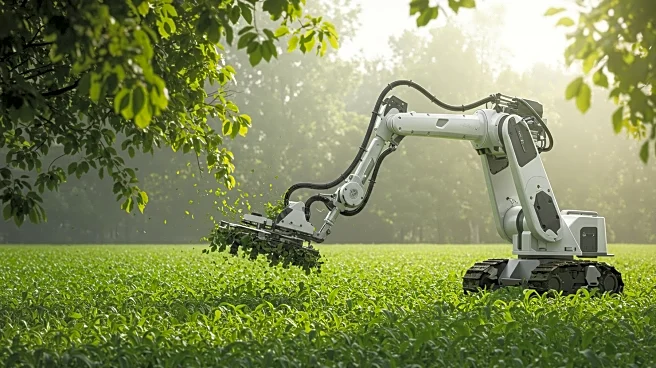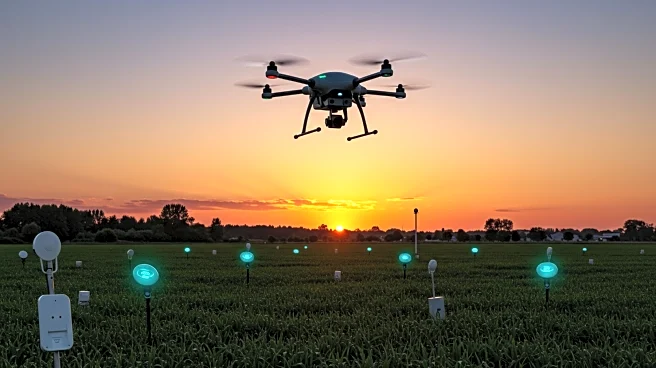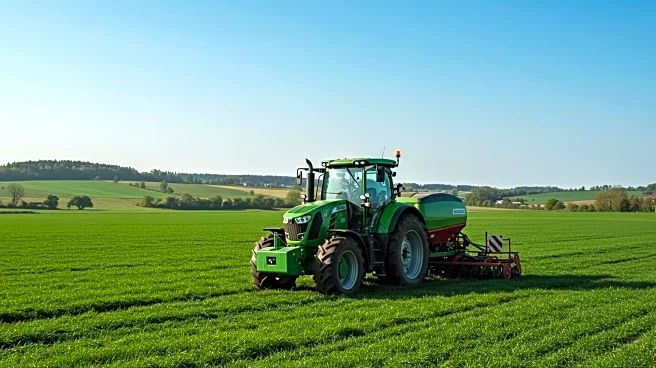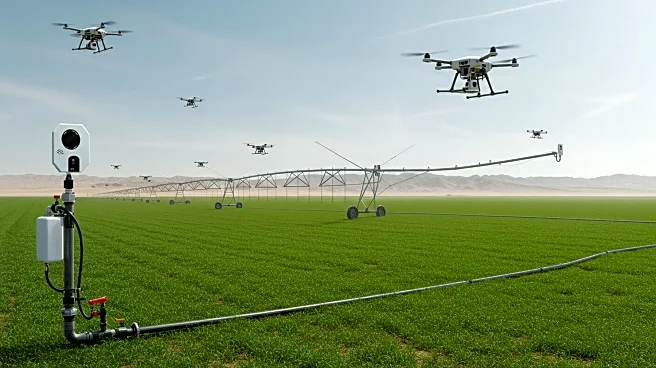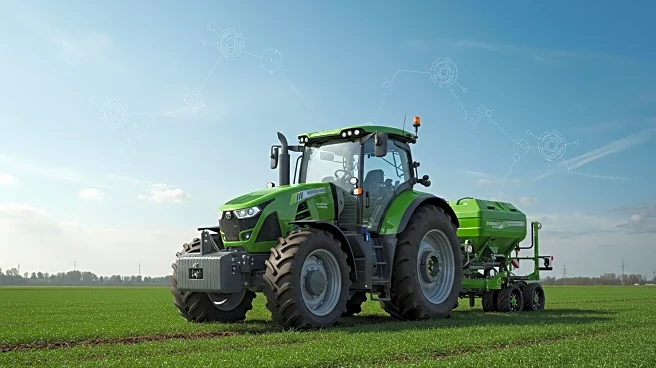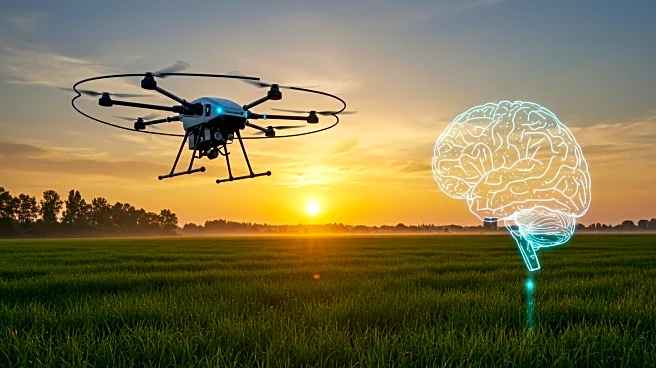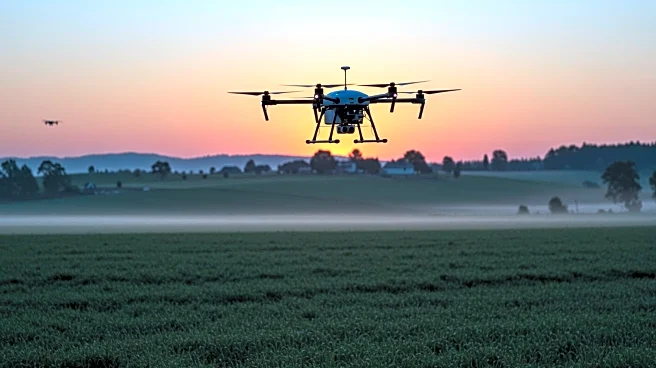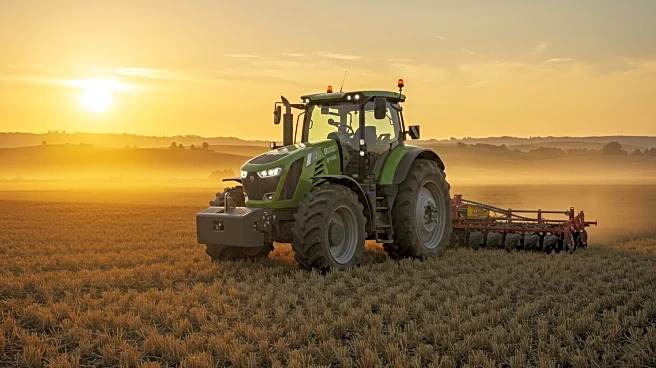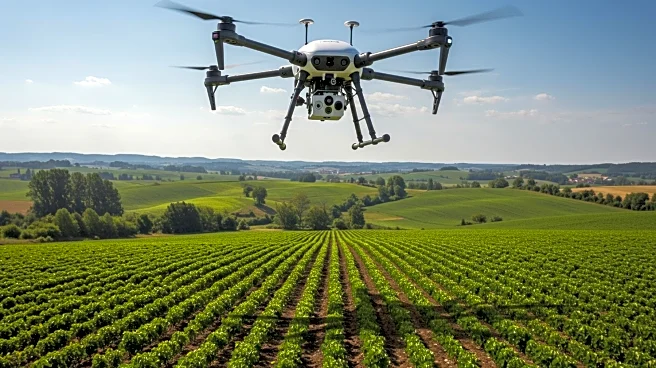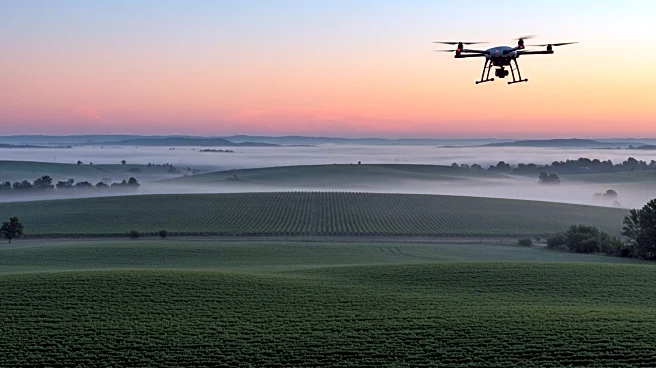What is the story about?
What's Happening?
Solinftec's Solix, an autonomous, solar-powered robot, is advancing weed management in agriculture through precision spraying and scouting. Equipped with a 40-foot boom and multiple cameras, Solix uses artificial intelligence to identify and target weeds, reducing chemical usage compared to traditional methods. The robot also monitors crop health and generates weed maps, allowing for continuous field maintenance. Solix can cover up to 50 acres per day, offering significant efficiency gains for farmers. Additionally, Agri Spray Drones are introducing the EAVision J100 drone, capable of spraying and surveying with advanced obstacle avoidance technology.
Why It's Important?
The integration of robotics in agriculture represents a significant shift towards more sustainable and efficient farming practices. By reducing chemical usage and optimizing field maintenance, these technologies can improve crop yields and environmental health. This innovation is crucial for addressing challenges such as labor shortages and the need for precision agriculture. As these technologies become more accessible, they could transform agricultural practices, leading to increased productivity and reduced environmental impact. Farmers stand to benefit from improved resource management and cost savings, while consumers may see enhanced food quality and availability.
What's Next?
The adoption of robotic technologies in agriculture is likely to expand, with further developments in autonomous systems and AI-driven solutions. Solinftec is working on an autonomous docking station for automatic tank refills, which could further streamline operations. As these technologies gain traction, regulatory frameworks, such as FAA certifications for drone operations, will play a crucial role in their deployment. Stakeholders, including farmers, technology developers, and policymakers, will need to collaborate to ensure the successful integration of these innovations into existing agricultural systems.
AI Generated Content
Do you find this article useful?
